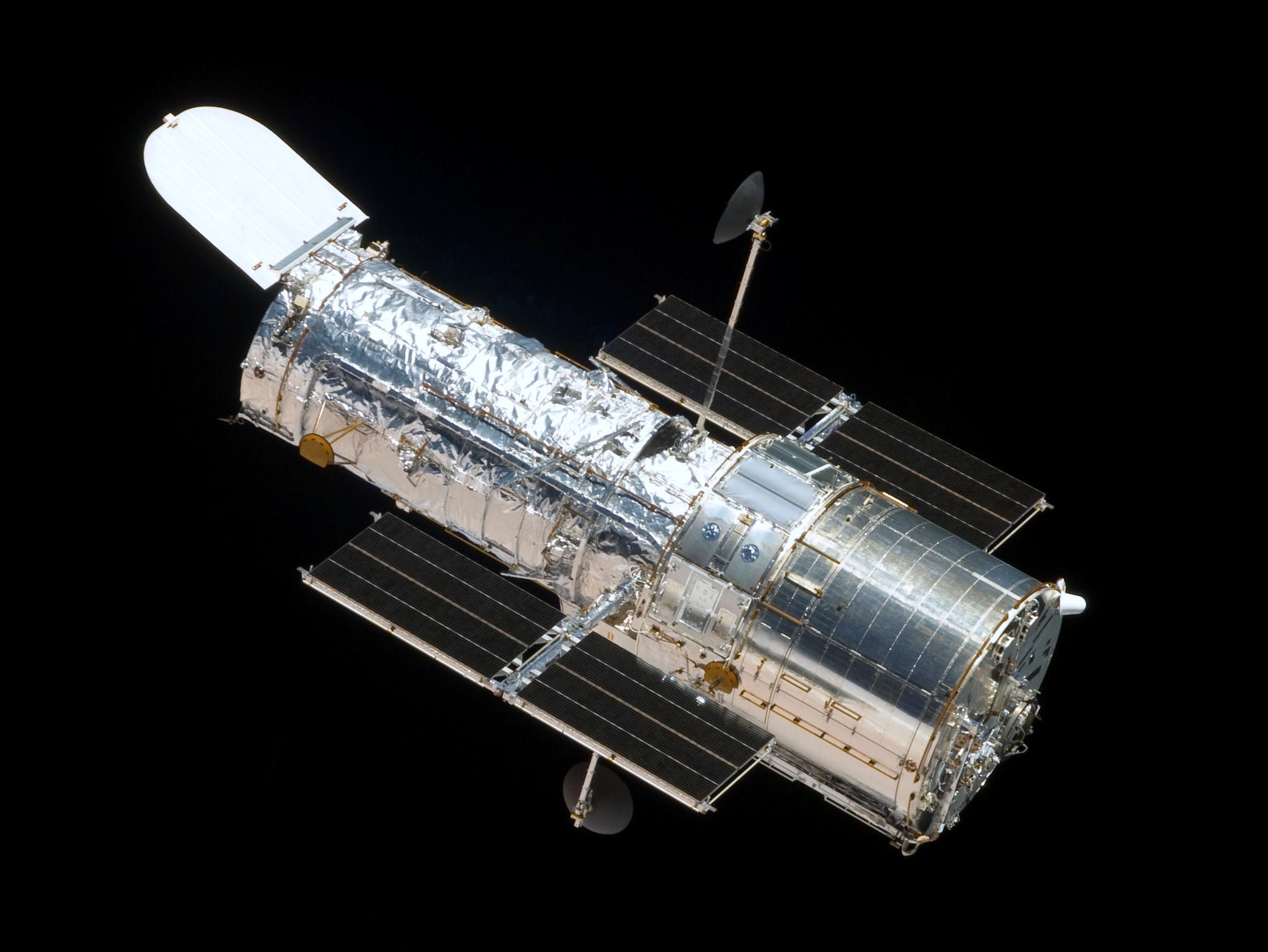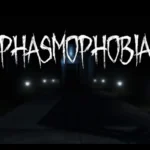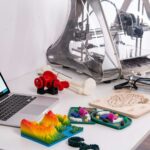The Hubble Space Telescope, a marvel in the field of astronomy, was launched on April 24, 1990. Positioned above the Earth’s atmosphere, it escapes the blurring effects that challenge ground-based observations, providing a crystal-clear view of the universe.
Key Highlights:
- Launch Date: April 24, 1990
- Purpose: Advancing our knowledge of the cosmos
- Orbit: About 600 kilometers (370 miles) above Earth
From its vantage point in orbit, Hubble has granted astronomers a new perspective on space and time. The telescope, named after the acclaimed astronomer Edwin Hubble, has been instrumental in a myriad of discoveries and greater understanding of the cosmos.
Notable Capabilities:
- Capturing sharp images of distant galaxies
- Observing the most ancient light in the universe
With over three decades of service, this space telescope continues to shed light on cosmic mysteries. It helps us understand the growth of galaxies and provides insights into the rate at which the universe is expanding.
Educators and students often rely on Hubble’s images and data to learn about the intricacies of our universe. Without the Hubble Space Telescope, our view of the sky would be far less rich and informative. Its contributions will be essential until it reaches the predicted end of its operational lifespan, sometime between 2030 and 2040.
Design and Capabilities
The Hubble Space Telescope showcases advanced technology and design features that ensure it captures spectacular images of the cosmos. Its instruments and optics are fine-tuned for peering into the depths of space, revealing the universe’s secrets.
Instruments and Imaging
The Hubble Space Telescope is equipped with a range of instruments that include various cameras and sensors, each designed to observe the universe in different wavelengths. For instance, the Advanced Camera for Surveys (ACS) greatly improved Hubble’s efficiency, allowing it to take higher-resolution images to uncover more about galaxy evolution. The Wide Field Camera 3 (WFC3) is a versatile camera capturing images in ultraviolet and infrared light, offering a comprehensive view across a wide range of wavelengths.
Mirror and Optics
At the core of Hubble’s capabilities is its primary mirror, spanning 2.4 meters in diameter. This large mirror collects light from the objects being observed and reflects it into the telescope’s instruments. Its precision-crafted optics allow for sharp images, which, combined with the stability provided by its solar panels and batteries, ensures that Hubble remains a powerful tool for astronomic discovery, unaffected by the distortions that can affect ground-based telescopes.
Launch and Missions
The Hubble Space Telescope began its journey in space and has since embarked on multiple servicing missions, contributing significantly to our understanding of the universe.
Initial Launch and Deployment
The Hubble Space Telescope was launched by NASA aboard the Space Shuttle Discovery on April 24, 1990. This major feat marked the beginning of an era in space exploration, as Hubble was set to observe the cosmos from its orbit above Earth’s atmosphere.
Servicing Missions
Over the years, astronauts have conducted several key servicing missions to upgrade and maintain the Hubble Telescope. Particular attention was given during the first servicing mission in December 1993, which corrected the flawed primary mirror. In total, there have been five servicing missions, with the last one completed in 2009, each employing the space shuttle as the vehicle for reaching the telescope.
| Servicing Mission | Date | Highlights |
|---|---|---|
| SM1 | Dec 1993 | Corrected optics |
| SM2 | Feb 1997 | Added new instruments |
| SM3A | Dec 1999 | Replaced gyroscopes |
| SM3B | Mar 2002 | Installed Advanced Camera |
| SM4 | May 2009 | Last mission, major upgrades |
Scientific Milestones
Hubble has been instrumental in numerous scientific breakthroughs. One of its most significant contributions was the creation of the Hubble Deep Field, an image taken in 1995 showing thousands of galaxies in a tiny region of space, offering a glimpse into the very early universe. Through such observations, Hubble has expanded our knowledge of the age, composition, and development of the universe.
Frequently Asked Questions
In this guide, we tackle some common curiosities about the legendary Hubble Space Telescope, from its significant discoveries to its intricate structure.
What are the most significant discoveries made by the Hubble Space Telescope?
Hubble’s keen eye has unveiled the accelerating expansion of the universe and contributed to the study of distant planets. It has enabled more precise measurements of the age of the universe.
How does the Hubble Space Telescope capture images of distant galaxies?
It uses a camera sensitive to light far beyond what humans can see, which allows it to obtain images of galaxies, nebulae, and other astronomical phenomena many light-years away.
What is the size and structure of the Hubble Space Telescope?
The Hubble is roughly the size of a large school bus, with a 43.5-foot length and a weight of 24,500 pounds. Its primary mirror spans 7.9 feet in diameter.
How has the Hubble Space Telescope contributed to our understanding of the universe?
Hubble has answered critical questions about the universe’s rate of expansion, the presence of black holes at galaxy centers, and the composition of the atmospheric conditions on other planets.
What were the reasons behind the delay of the Hubble Space Telescope launch?
The launch was postponed due to the Challenger tragedy in 1986, leading to a reevaluation of spacecraft safety. Hubble’s launch happened subsequently on April 24, 1990.
What is the current status of the Hubble Space Telescope’s functionality?
Since the space shuttle’s retirement, maintenance missions have ceased, but Hubble remains in operation and is expected to continue its mission, contributing to astronomy’s groundbreaking discoveries.







